
One of my life missions has been to rescue B2B blogs from their backwater boring status and bring them to the forefront of awesomeness.
Thankfully, I’m seeing the trend grow.
More B2B blogs are nailing it and putting forth the level and quality of content that B2B readers truly crave … but there is still progress to be made.
I’ve assembled this list of tips that can help you bring your B2B content up to the next level.
9 Tips for Creating Content that B2B Readers Love
1) Use jargon appropriately.
Whenever you spend a lot of time in a particular niche, the jargon rubs off on you. If you’re in the military, you’re going to talk about BFO, CFB, BOHICA, BZ, EOD, JO, FTN, and everyone will know what you’re talking about. (I’m honestly not sure. I just pulled those off military.com.)
If you’re into SEO, you expect to be able to use that acronym — SEO — and everyone knows what you’re talking about.
Every industry has its jargon.

While overuse will muddy up your content, using jargon strategically can make people feel included, welcomed, respected, and appreciated for their knowledge.
The first few paragraphs of this Moz article are all that you need to alert you to the fact that this is an insider’s piece. You can expect some jargon, and that’s okay.
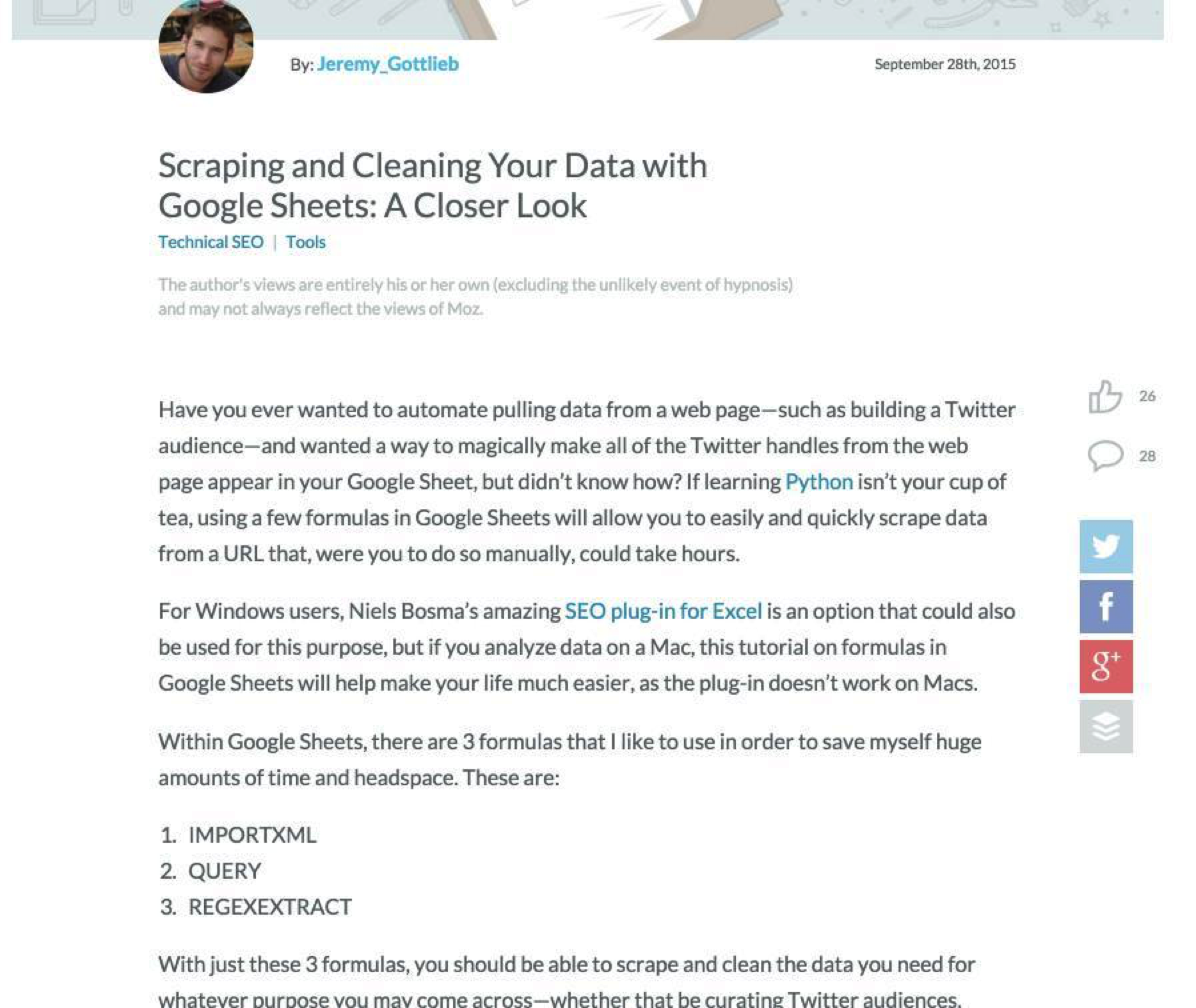
Keep in mind that jargon can be seen as pretentious, so make sure you’re using the right jargon, in the right way, for the right reason, and with the right readers.
2) Go deep.
B2B readers are proud of their knowledge, and rightly so. They have invested their lives, their education, their careers, and their time into acquiring professional skills.
They love it when people speak to them on their level — a deep level.
That’s why the B2B content that you produce should go deep. Take this expert excerpt from the Toptal blog:
The final step is to iterate N elements once again replacing the element by its code for each element: element[i] = code[i]. The complexity is O(N). The complexity of FastSMQT is O(N) + O(2^L) + O(L*(2^L)) + O(N) = O(2*N) + O((L + 1)*(2^L)) = O(N + L*(2^L)) .

It’s gibberish to the average Joe, but it’s pure read-worthy gold to the software engineer.
Bear in mind, you can’t get content this deep from most “freelance writers” you find on Craigslist. Sourcing B2B writers is one of the first and greatest challenges to generating great B2B content.
3) Predict the future.
B2B blogs will thrive when they are dealing with present hot topics and future predictions. Predictive blogs tend to generate viral sharing and excited feedback.
Who wouldn’t want to know the future of their industry or the precursive power of daily trends?
A well-researched, thorough, and to-the-point prophetic piece is the kind of content that will give you a strong ROI. The blog, Acxiom, has an example of this kind of post:

This kind of content is especially popular around the New Year, when B2B readers are particularly interested in finding out what’s next.

4) Get to the bottom line.
Nearly every B2B reader shares an interest in the bottom line: revenue. When you can boil down the trade to this fundamental bedrock, then you’ve landed on a popular topic.
It is possible to chase everything back to this one point. Whether it’s an abstruse coding trick, a marketing move, or some other niche technique, everything somehow goes back to the bottom line.
This blog is a great example of getting down to brass tacks. (Or are those thumbtacks?)
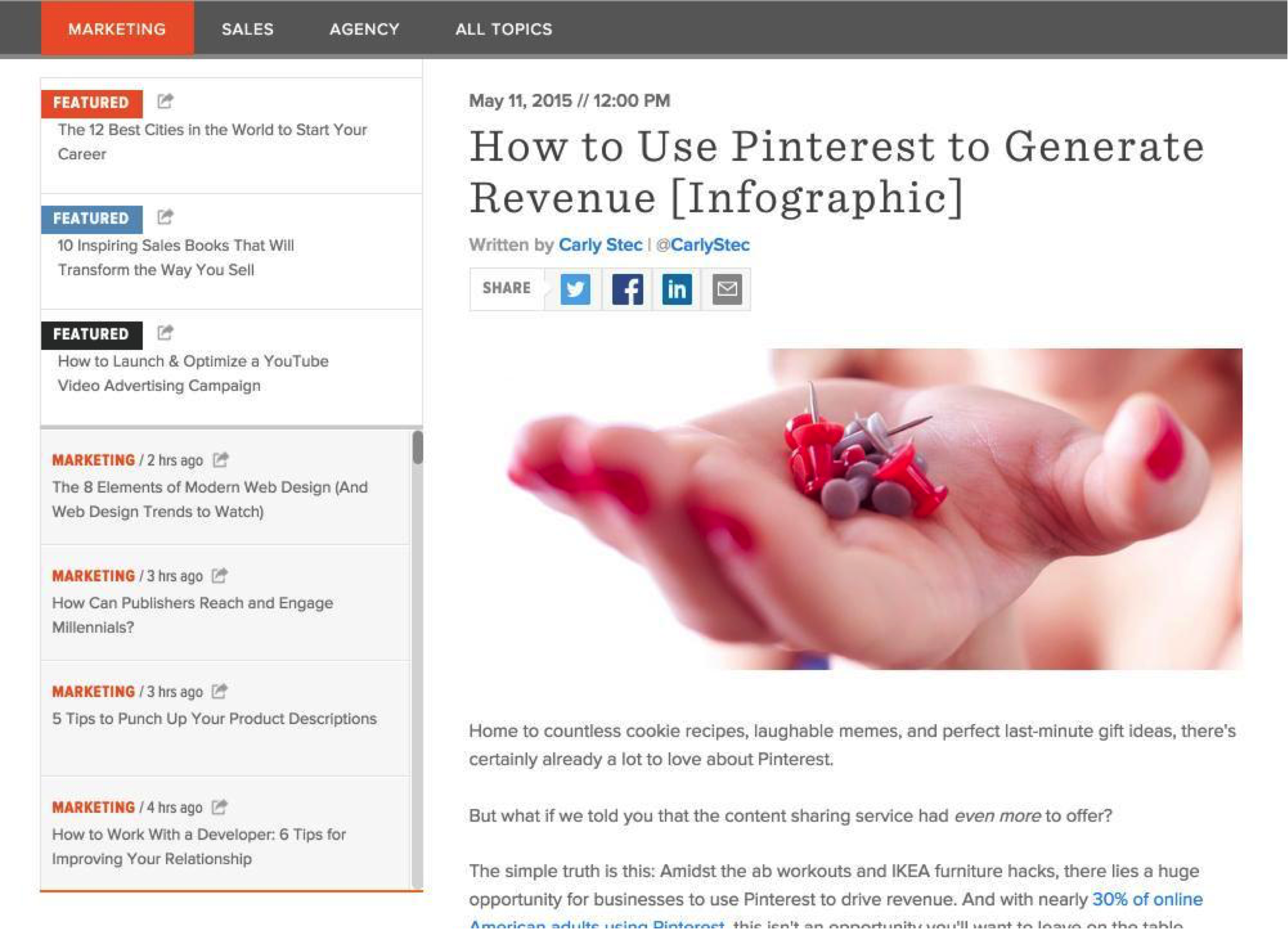
The Proppelr blog uses revenue-driven content to advance the following article. And the title tells all:
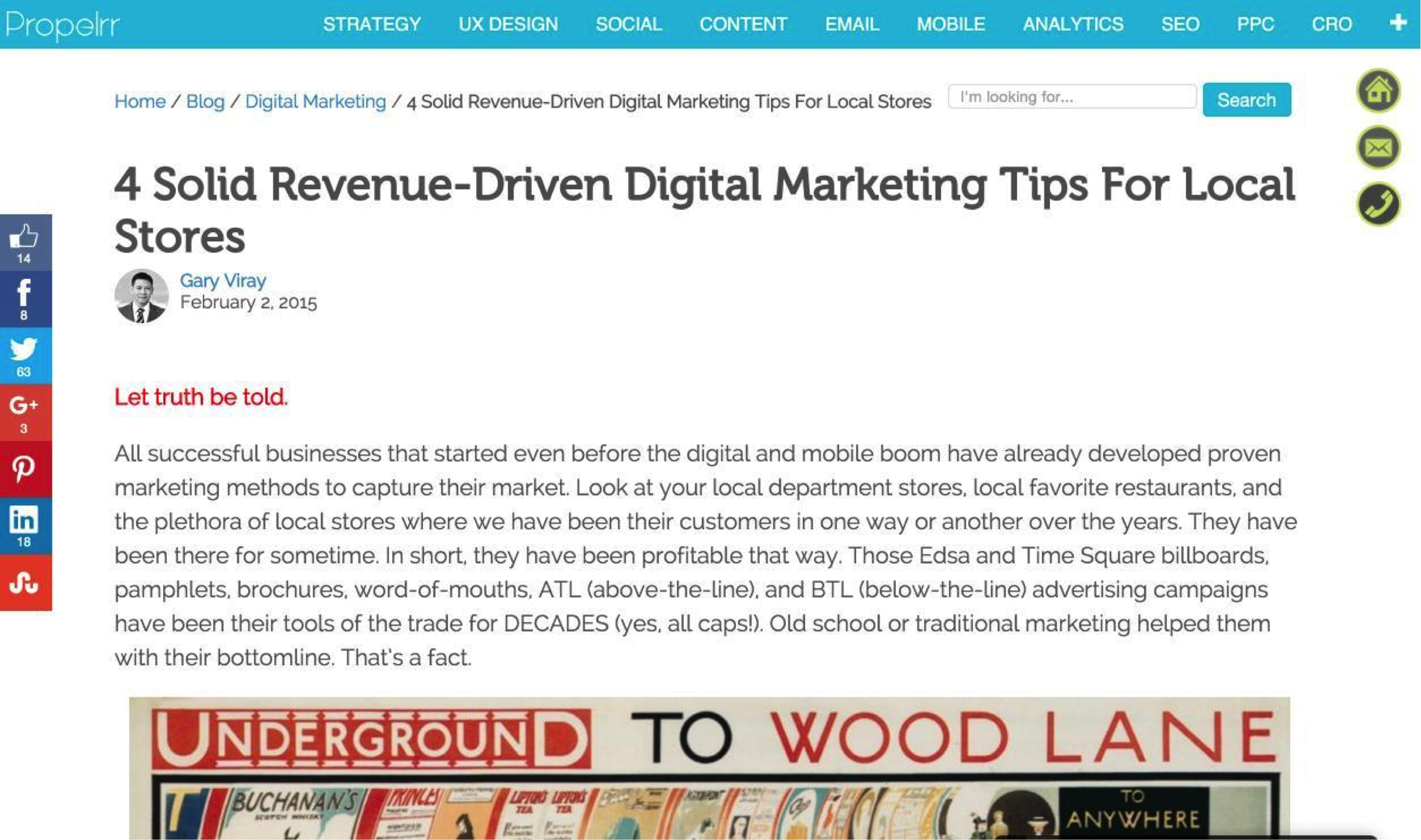
B2B content can and should deal with a wide range of topics. Be sure to trace these topics back to a core concern: revenue.
5) Be an expert.
There’s an alarming trend in B2B content marketing. It’s becoming challenging to find experts in niche fields, especially experts who have the time and ability to create long-form content for content marketing purposes.
According to a report from CMI, more B2B marketers say they are challenged with finding trained content marketing professionals this year (32%) than last year (10%).
It makes sense. If you have an expert, you’re probably using that expert to do great things, not just to write about them.
Toptal has managed to overcome this challenge. Their business model involves attracting and recruiting the finest engineers in the industry. Their marketing strategy includes getting these gurus to create content:

Even if you don’t know what optimized successive mean quantization transform is, you at least know that this B2B blog is getting an expert to wax eloquent on the subject.
6) Create case studies.
Case studies are a linchpin of great content.
Case studies aren’t just advertisements. They are revelations of data, information, technique processes, tutorials, and a bunch of goodness rolled up into a single piece of content.
Most marketers use case studies for their glaringly obvious benefit — showcasing the skills and expertise of the business.
Yet case studies have a broader effect. In addition to acquiring clients, case studies bring value to the industry as a whole. Industry members and participants can learn how things are done, the techniques used, and the processes followed to achieve a certain goal.
Think With Google is a collection of case studies, each showcasing what a good case study looks like:

Beginning with the title, the case study promises to tell a story and bring value. The bulleted section of the case study makes for easy, digestible reading:
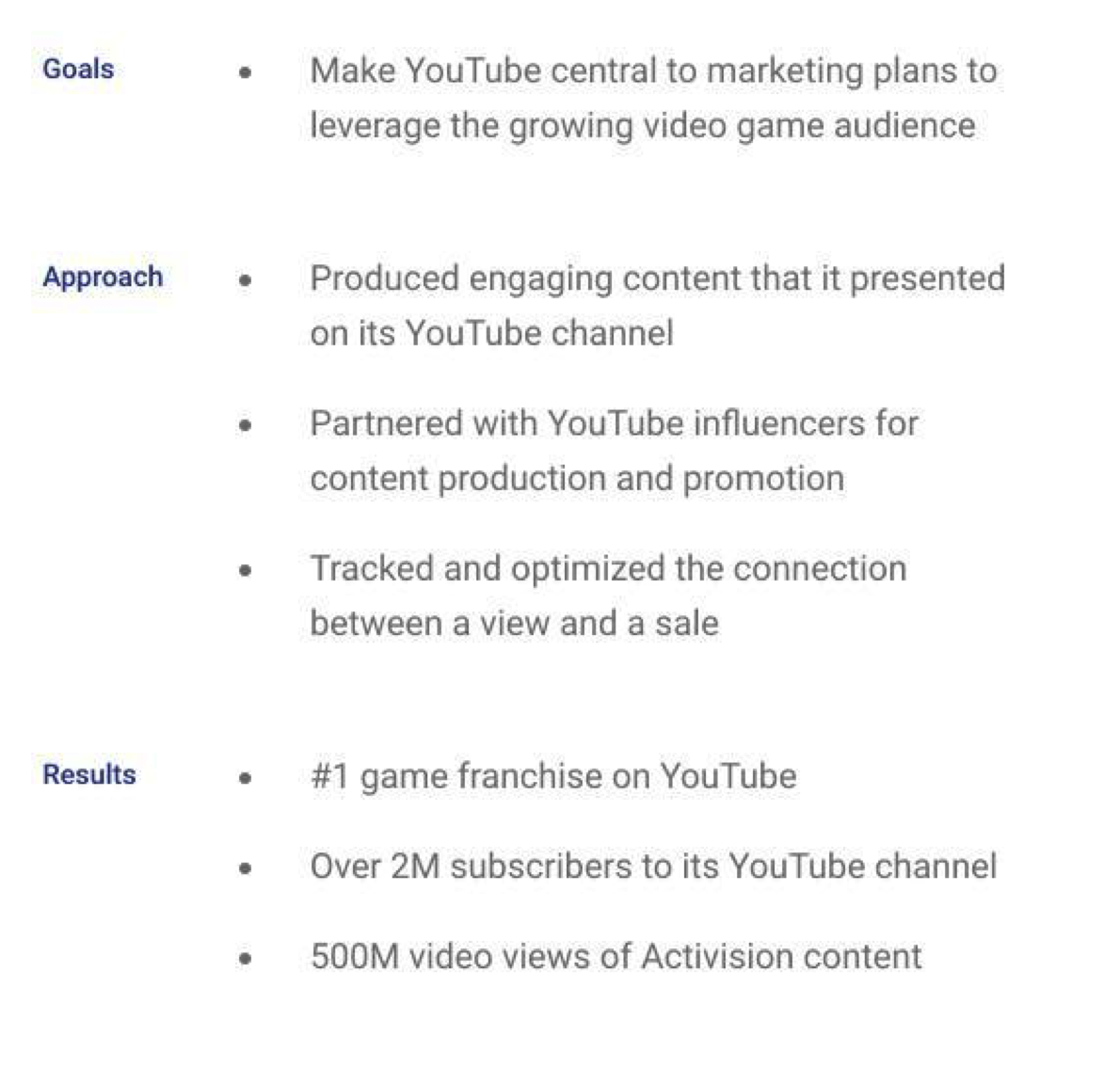 Even failure makes for a great case study, as per the following one on JeffBullas.com:
Even failure makes for a great case study, as per the following one on JeffBullas.com:
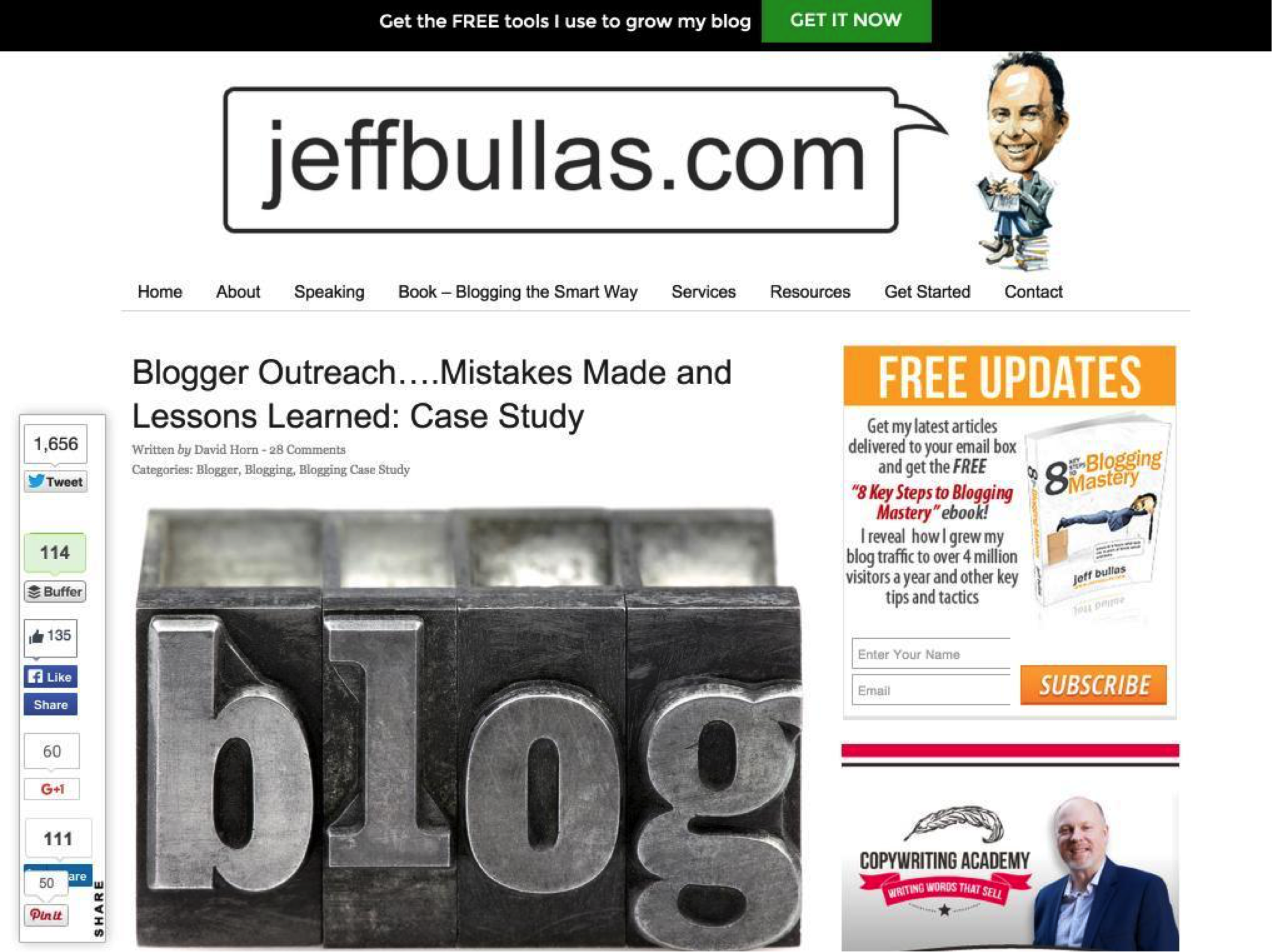
Case studies have immense value, and every B2B content marketing effort should contain them.
7) Be ruthlessly tactical.
The content has to make a difference.
The best B2B blogs will always be those that answer the toughest questions, solve the thorniest problems, and show the clearest solutions.
This article from Cardinal Path exemplifies the tactical approach:

The writer explains exactly why he has written the whitepaper:
“‘But which one is best?’ — We get that a lot too….Our newest whitepaper, A Marketer’s Guide to Finding the Right Analytics Solution, provides an overview of the major analytics platforms and offer insights into ways you can optimize your solution.”
There’s no need to keep your readers in the dark. A good B2B article should do the following:
- Address a problem. This should be a commonly-identified issue in your field. It’s something that your audience deals with.
- Sketch the problem for the reader. They’ve got to be able to relate to it — to say, “Yeah, I have that problem!”
- Solve the problem. This is the meat of the article.
Such articles will be tactical to the bone. They explain clearly how to do, what to do, what it looks like — with data to back it all up. The more specific, detailed, and actionable you can be, the better.
8) Bring forth the juicy data.
Ah, data, how we love you.
When a B2B blog publishes a solid mass of data, the data aficionados, bloggers, ponderers, thinkers, movers, and shakers pounce on it.
The Content Marketing Institute is a purveyor of data. Their research-backed approach gives to their B2B audience exactly what they crave — lots and lots of data.
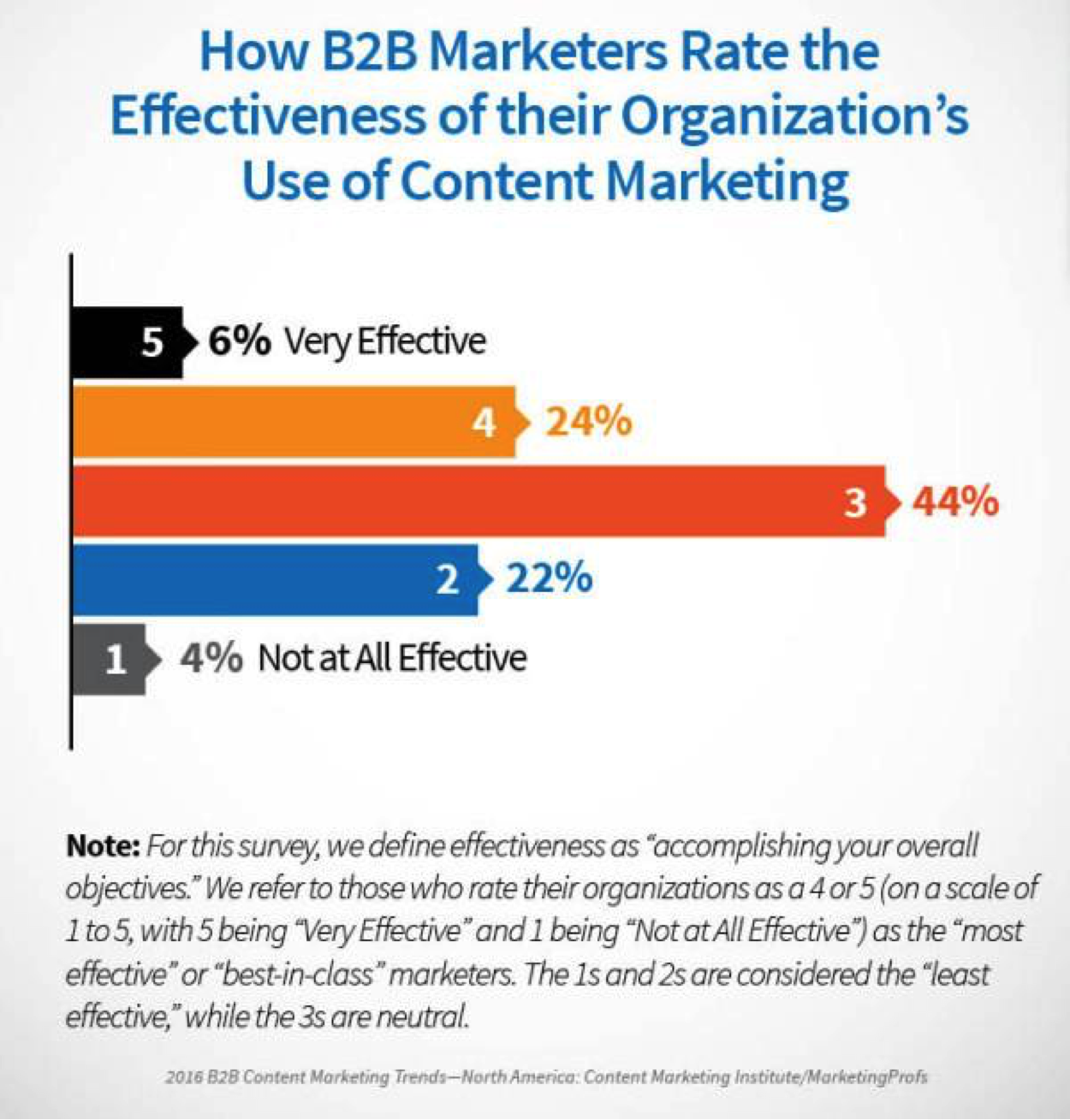
The more statistics, pie charts, line graphs, and bar graphs you can pack into your article, the better.
9) Just say it, prove it, and be done.
Some writers obsess over style.
How does it sound? Is my tone correct? What’s the best word in this particular sentence? How should I wrap up this paragraph? Should I use a question here, or is a declarative sentence better?
I’m all about stylistic finesse. You don’t want your blog post to fall flat with a can-hardly-read-it style. On the other hand, you don’t want to obsess over it. Great B2B content simply says what it needs to say, proves it, and that’s it.
If you have a flair for style, so be it. But don’t make stylistic perfection your goal.
I’d argue that Invision has one of the leading design B2B blogs in the industry. Their content is typically packed with data and actionable information, but they don’t pursue a sizzling style.

An article that contains the words iterative, prototyping, methodology, articulate, and hypothesis in the first couple of lines?
It’s not exactly a man-bites-dog style.
Let me make the point clear with an example. ViralNova is B2C:

You don’t need this kind of content. You don’t need the “OMG!” approach or the cliff-hanging style for a B2B blog. Your goal isn’t to be Hemingway, let alone ViralNova. Your goal is to be as clear as possible.
Conclusion
This article has focused on articles as the primary portal of B2B content. The reason for this focus is because of the lack of quality I’ve noticed in many B2B blogs.
Keep in mind that B2B content can take myriad forms. For example, advanced and powerful webinars are an explosive source of producing high-value content with the extra advantage of generating direct leads.
Whatever the style, medium, approach, or goal, keep these tips in mind.
What trends, tips, or tactics do you have for creating killer B2B content? Let us know in the comments section below.
![]()






